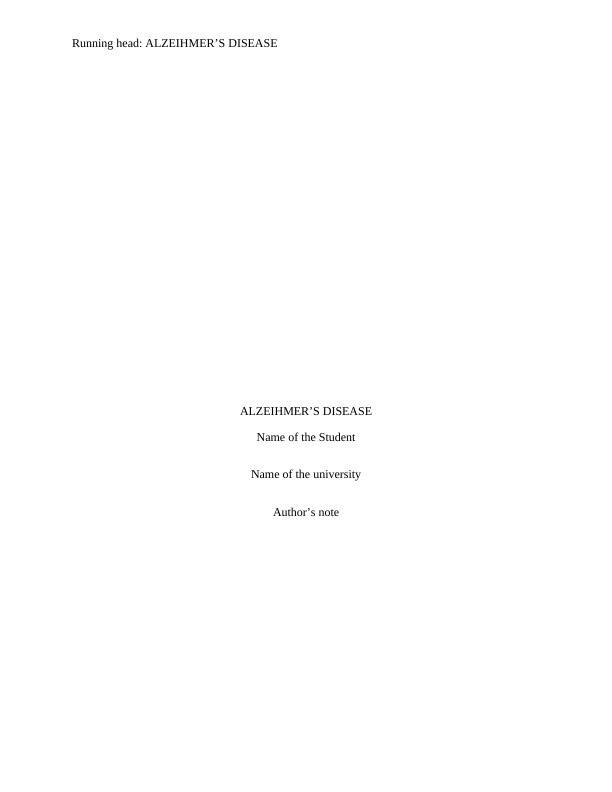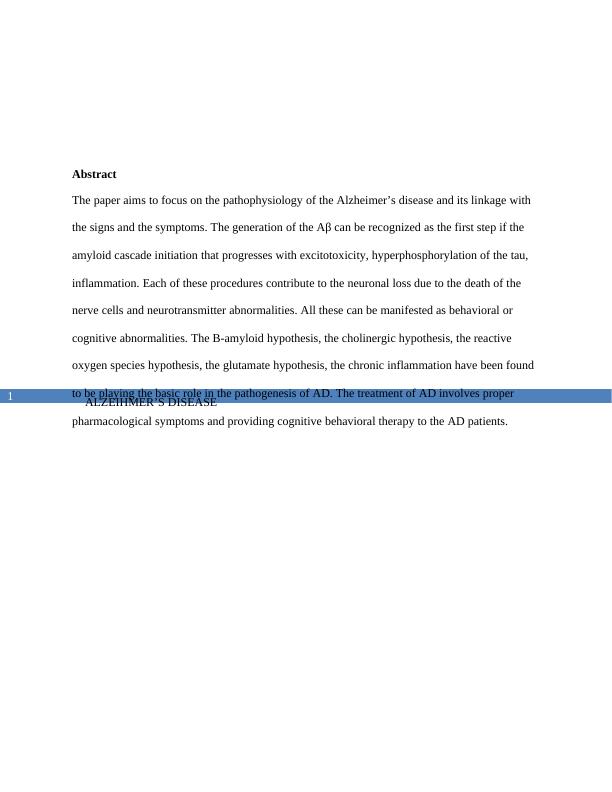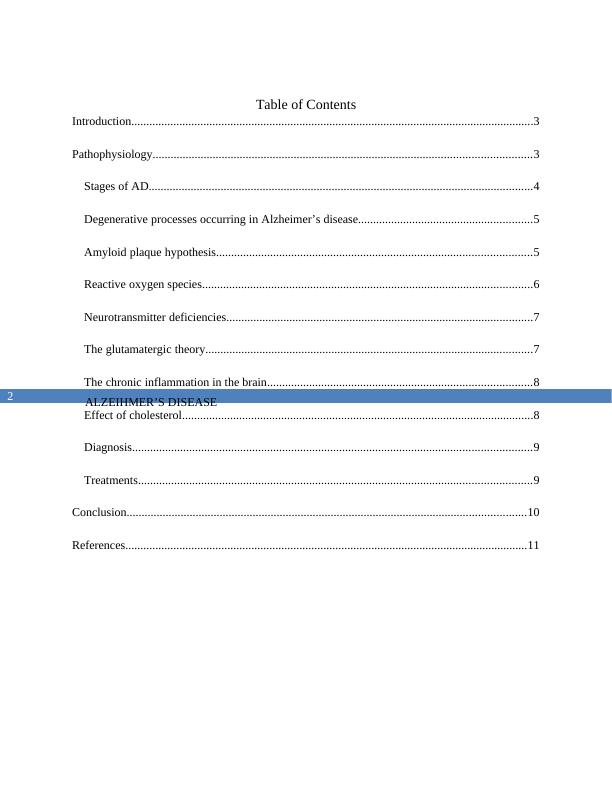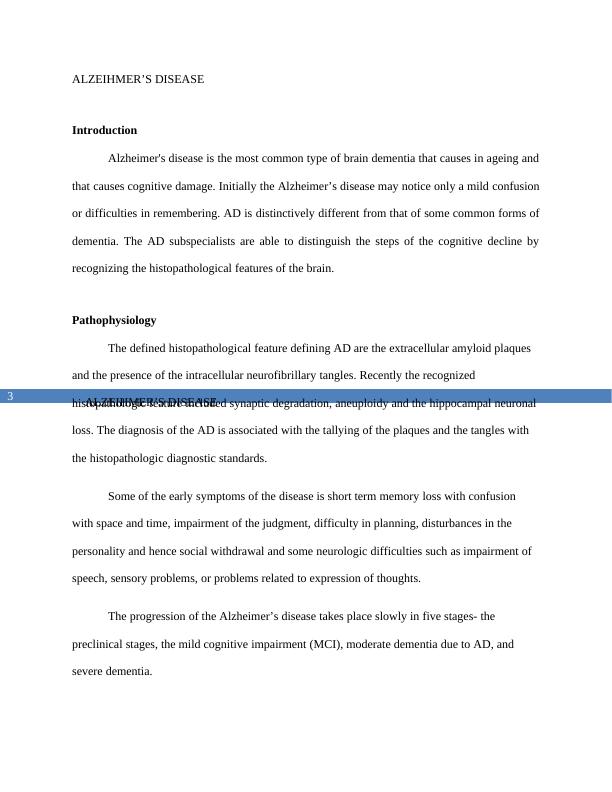Alzheimer Disease Project PDF
14 Pages3441 Words143 Views
Added on 2021-05-30
Alzheimer Disease Project PDF
Added on 2021-05-30
ShareRelated Documents
Running head: ALZEIHMER’S DISEASEALZEIHMER’S DISEASEName of the StudentName of the universityAuthor’s note

ALZEIHMER’S DISEASE1AbstractThe paper aims to focus on the pathophysiology of the Alzheimer’s disease and its linkage with the signs and the symptoms. The generation of the Aβ can be recognized as the first step if the amyloid cascade initiation that progresses with excitotoxicity, hyperphosphorylation of the tau, inflammation. Each of these procedures contribute to the neuronal loss due to the death of the nerve cells and neurotransmitter abnormalities. All these can be manifested as behavioral or cognitive abnormalities. The Β-amyloid hypothesis, the cholinergic hypothesis, the reactive oxygen species hypothesis, the glutamate hypothesis, the chronic inflammation have been found to be playing the basic role in the pathogenesis of AD. The treatment of AD involves proper pharmacological symptoms and providing cognitive behavioral therapy to the AD patients.

ALZEIHMER’S DISEASE2Table of ContentsIntroduction......................................................................................................................................3Pathophysiology..............................................................................................................................3Stages of AD................................................................................................................................4Degenerative processes occurring in Alzheimer’s disease..........................................................5Amyloid plaque hypothesis.........................................................................................................5Reactive oxygen species..............................................................................................................6Neurotransmitter deficiencies......................................................................................................7The glutamatergic theory.............................................................................................................7The chronic inflammation in the brain........................................................................................8Effect of cholesterol.....................................................................................................................8Diagnosis.....................................................................................................................................9Treatments...................................................................................................................................9Conclusion.....................................................................................................................................10References......................................................................................................................................11

ALZEIHMER’S DISEASE3ALZEIHMER’S DISEASEIntroductionAlzheimer's disease is the most common type of brain dementia that causes in ageing andthat causes cognitive damage. Initially the Alzheimer’s disease may notice only a mild confusionor difficulties in remembering. AD is distinctively different from that of some common forms ofdementia. The AD subspecialists are able to distinguish the steps of the cognitive decline byrecognizing the histopathological features of the brain. Pathophysiology The defined histopathological feature defining AD are the extracellular amyloid plaques and the presence of the intracellular neurofibrillary tangles. Recently the recognized histopathologic feature included synaptic degradation, aneuploidy and the hippocampal neuronal loss. The diagnosis of the AD is associated with the tallying of the plaques and the tangles with the histopathologic diagnostic standards. Some of the early symptoms of the disease is short term memory loss with confusion with space and time, impairment of the judgment, difficulty in planning, disturbances in the personality and hence social withdrawal and some neurologic difficulties such as impairment of speech, sensory problems, or problems related to expression of thoughts. The progression of the Alzheimer’s disease takes place slowly in five stages- the preclinical stages, the mild cognitive impairment (MCI), moderate dementia due to AD, and severe dementia.

End of preview
Want to access all the pages? Upload your documents or become a member.
Related Documents
Investigating the Use of BAN2401 (A? mAb) in Treatment of Alzheimer Diseaselg...
|10
|3149
|197
HNB3209 - Report on Nursing and The Communitylg...
|12
|3009
|98
Alzheimer Disease: Clinical Updatelg...
|13
|3277
|403
Alzheimer’s Disease | Presentationlg...
|1
|1591
|29
How does long term memory and short term memory differ in people with Alzheimer?lg...
|8
|2228
|45
Nursing Case Study Analysis Assignmentlg...
|7
|1182
|444
